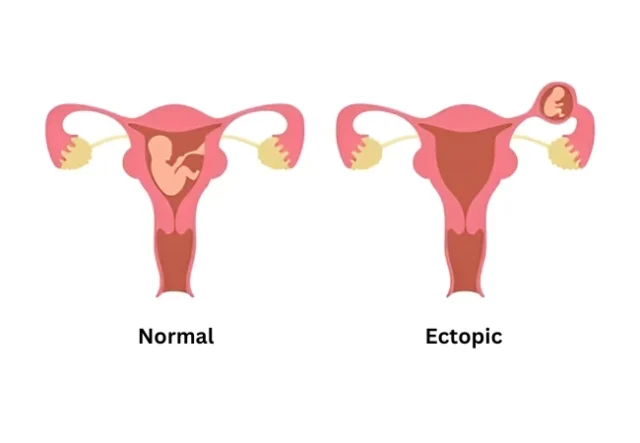A 29 year old woman in Hyderabad came to Citizens Speciality Hospital with abdominal pain and abnormal vaginal bleeding for two days said in Hans India. After examination by the hospital, she got diagnosed with a rare Cesarean Scar Ectopic Pregnancy. Which is very rare and potentially a life threatening condition.
What is Cesarean Scar Ectopic Pregnancy?
Usually when a woman gets pregnant, her fertilised egg will get attached to the uterus wall. But in Ectopic Pregnancy the fertilised egg implants itself outside of the womb, usually in one of the fallopian tubes.

Just like that in Cesarean Scar Ectopic Pregnancy the fertilised egg will get attached to the scar tissue from a previous C-section instead of attaching to the wall of the uterus where a healthy pregnancy can grow. The scar tissue won’t be as strong as the uterine wall which can tear anytime and results in uterine rupture, excessive bleeding (Hemorrhage) and in rare cases it need a hysterectomy (a surgery to remove a woman’s uterus). Left untreated can also lead to maternal mortality.
“Caesarean scar ectopic pregnancies are extremely rare, occurring in less than 1% of all ectopic pregnancies,” said Dr JYOTI Kankanala.
Under the expert care of Dr Jyoti Kankanala who is an Obstetrics & Gynaecologist, the patient underwent a laparoscopic surgery where she performed scar ectopic excision and repair.
How Laparoscopic Surgery is performed?
A laparoscopic surgery is a minimally invasive procedure to look the problems in stomach or pelvic area. The tool which is used for this surgery is called laparoscope, which is a thin, telescopic rod with a video camera on the end. Surgeon puts the laparoscope through a small cut (incision) in belly (abdomen) measuring half an inch or less. Surgeons may make up to three more cuts to insert other surgical instruments so they can have a clear look on all organs to find the problem and to perform the operation.
The laparoscope camera projects an image of the inside belly or pelvis onto a monitor in real time. Using these images, surgeons can watch their hand motions during the procedure.
“Fortunately, laparoscopic surgery allowed us to remove the ectopic tissue and repair the uterine defect, preserving the patient’s chances of having children in the future,” said Dr Kankanala.
She also said that the patient responded well to the surgery, experiencing no pain post-operation and having passed both urine and stool. The patient remains stable with no signs of infection or further complications. Even after the procedure successfully removed the ectopic tissue, Dr Kankanala emphasised the importance of continued monitoring for potential recurrence or other complications. “The risk of recurrence cannot be predicted, nor can irregular bleeding post-surgery be entirely ruled out, though we do not anticipate further issues related to this procedure,” she added.
Ectopic pregnancies diagnoses in approximately 1-2% of all pregnancies globally. Out of these, Caesarean scar ectopic pregnancies are very rare. However, such cases are rising over the past decade due to the increase in caesarean deliveries. Awareness and early detection in such cases are important for proper treatment.


